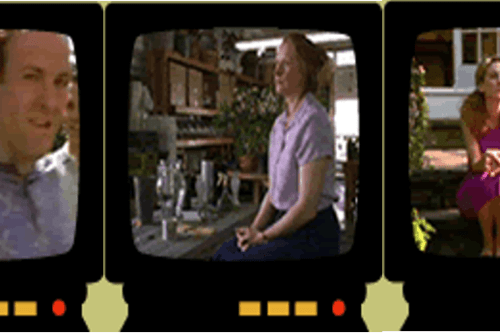In an interview with The Sopranos‘ creator David Chase in early March of this year, Terry Gross of NPR’s Fresh Air asked if any scene in the series had been particularly misinterpreted by the public. His mind went immediately to “University” (episode 32) about the murder of a young exotic dancer named Tracee. This answer does not surprise me, as the episode about Tracee lingers in my own mind—along with Dr. Melfi’s rape and Janice’s erotic play with dominant and submissive roles—as an engaging and embattled representation of contemporary womanhood. The series’ creator and writers are clearly aware of ongoing debates in feminism over sexuality and power; in fact the show seems to make a knowing reference to the history of the “feminist sex wars” when Carmela warns Janice that her fiancé, Richie Aprile, will soon enough take a mistress. Janice responds that she doubts any mistress will let Richie hold a gun to her head while they have sex. Carmela gasps, “I thought you were a feminist!” Janice clarifies, “He usually takes the clip out.” Tracee, like Janice, is a site of contestation over the ambiguous imprint of feminism on filmic representations of the female body, especially in contrast to network television’s one-dimensional representation of strippers (think Friends: Stripper stole the ring!) or simple-minded blockbuster events like the films Striptease and Showgirls. (Regina Barreca, in “Why I Like the Women in The Sopranos Even Though I’m Not Supposed To”—exclaims “even the whores are not your ordinary whores—they too have complicated inner lives” [36]).
David Chase posits the episode about Tracee as heavily misunderstood to be a simple exercise in misogyny. His background suggests that a certain countercultural energy informs his approach to this series. He regularly criticizes network television for selling a false reassurance to the audience that Americans are good people, that authority figures have our best interests at heart, that the family is a safe haven from a harsh world, and that consumer capitalism is an appropriate mode of bonding, recharging, and finding joy (Chase). He reminds us, “America has really big serious problems that are continually papered over with boosterism and escapism and money” (Kelly). His comments on “University” redirect attention from the topic of violence against women to the larger fields of cultural violence—capitalism and family values—that encompass and entail this particular gendered violence; by revealing these economic structures as inherently violent, Chase makes a materialist feminist critique of patriarchy worthy of bell hooks. 1 And by invoking hooks, I mean to acknowledge the politically committed work of reading against the grain of progressive filmmakers (Spike Lee, Quentin Tarentino, Oliver Stone), while avoiding hooks’s stock answer (“it’s not enough”) and the “socialist-feminist realism” that has been rightly criticized for lending itself more “to moralistic denunciation than to building knowledge of complicated genres” (King and McCaughey 15).
This episode will make you wince with the brutality of Tracee’s death, and its use of the pernicious visual cliché of the murdered prostitute or punished fallen woman lends itself to easy feminist denigrations, but any knee-jerk dismissal of the show as somehow going too far (by murdering a woman) or not going far enough (by failing to adopt a sex-positive image of the stripper as liberated lady) should be categorized as what Judith Halberstam calls “a crisis of spectatorship.” She argues, “We simply do not know how to read imagined violences: all too often representations of the pernicious effects of homophobia, racism, and sexism are collapsed by the viewer into homophobia, racism, and sexism themselves” (253). A film about sexism is, in other words, often misread as a sexist film. This illiteracy may be behind readings of Tracee’s death as misogynist rather than as a critical comment on the misogynist representations of violence against sexual women.
- His language echoes that of another rigorous media critic, Douglas Kellner, as well. In Media Culture, Kellner argues that “the political functions of media culture . . . include providing compensations for irredeemable loss while offering reassurances that all is well in the American body politic” (69). Compare this statement with David Chase’s criticisms of network television: “The function of an hour drama is to reassure the American people that it’s O.K. to go out and buy stuff” (Chase).[↑]


